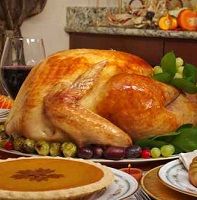Article
Gout: Just in Time for the Holidays
Author(s):
November may be peak season for gout flares, researchers at the Reading Health System in Reading, Penn., and the University of Tennessee Health Science Center in Memphis reported in the August issue of Clinical Rheumatology.

November may be peak season for gout flares, researchers at the Reading Health System in Reading, Penn., and the University of Tennessee Health Science Center in Memphis reported in the August issue of Clinical Rheumatology.
Studies have suggested that seasonal variation may exist, but there is little agreement on just what the pattern is. Anthony A. Donato, MD, and colleagues reviewed thousands of hospitalization records to identify a trend.
Using the Agency for Healthcare Research and Quality’s Nationwide Inpatient Sample (NIS) database, they identified patients over age 18 with a primary diagnosis of gout between 2009 and 2011. They then studied cyclic trends to see if there was a pattern in hospital admissions for gout flares.
Out of 28,172 hospitalizations, they found that admissions peaked in November. The lowest incidence of admissions occurred in the spring.
Previous studies have shown varying patterns and associations. Many showed higher incidences in spring and summer and researchers have found some correlation with temperatures and barometric pressure, but other studies have shown no association.
Other diseases caused by the accumulation of crystals have shown very different seasonal trends, Donato and colleagues write, suggesting different pathogenetic pathways. However, the authors postulated that changes in eating patterns—namely the increased consumption of alcohol and purine-containing foods such as meat and gravy—around the holidays may influence flares and recommended further study.
Such a theory requires more study, but they noted, “controlling such factors could potentially lead to better management of patients with gout who are at risk of acute attacks.”



